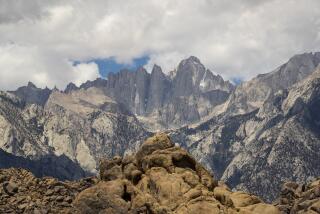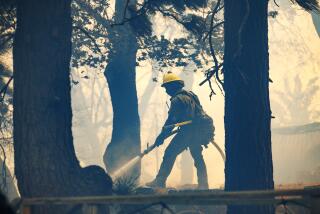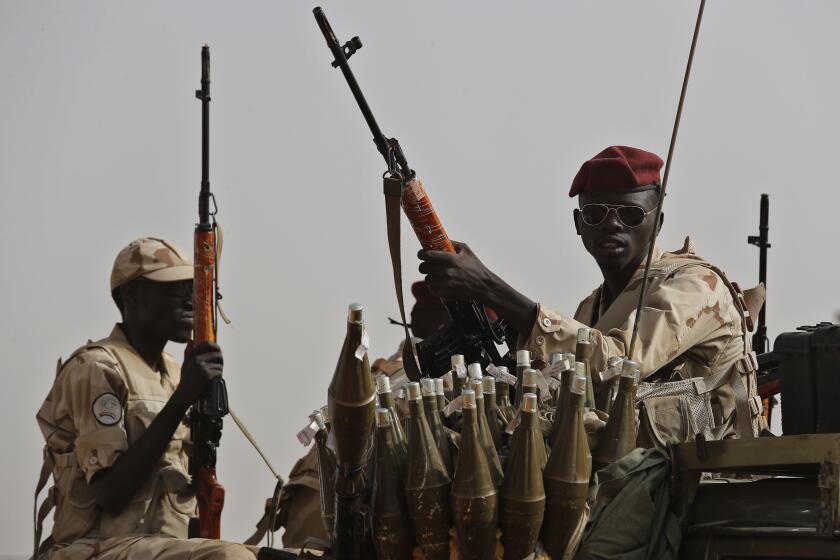1952 Blizzard Snared a Train in Its Frigid Grip
It was late Sunday morning, Jan. 13, 1952, and the Southern Pacific streamliner City of San Francisco was already 22 hours behind schedule. This was wartime; factories in Nevada needed to get munitions to San Francisco and on to Korea. If one train -- passenger or freight -- got stuck, all were delayed.
The 18-car train bound for Oakland rolled out of Norden, Calif., near Donner Summit, at 11:23 a.m., and into a blizzard. It carried 226 passengers and crew.
Winds gusted to 100 mph, whipping the snow into huge drifts. Miles ahead of the train, a snowplow cleared the tracks. But after the plow passed, two snow slides covered the rails again. No one knew.
The train reached Yuba Pass about noon and plowed through the first snow slide at 35 mph. But the second slide -- 10 to 18 feet high -- stopped the train.
Railroad workmen hiked a quarter-mile to a call box to report the incident. Passengers, assured that help had been summoned, settled in to pass the time. Steam generators supplied heat. A card expert gave bridge lessons. A salesman organized a talent show. Dr. Walter Roehll of Middletown, Ohio, took charge and set down rules: no drinking. He needed the gin from the bar to sterilize his only needle.
“We laughed and played games, making bets [on] how long it would take the snow to build up on the outside of the windows,” Doris Bugbee Bourgeois, 85, said in a recent phone interview from her home in Folsom.
Railroad workers cracked the doors open at the ends of each car for ventilation. Snowdrifts had covered the train.
Railroad historian Robert J. Church describes the incident in “Snowbound Streamliner,” published in 2000. Church, a Sacramento dentist who has loved trains since childhood, had heard about the incident decades earlier.
“I was giving a talk at the Sacramento Railroad Museum when an old, stooped-over guy said he was one of the snow pilots who tried to get to that stranded train,” Church said in a recent interview. “He kept track of everything in his logbook, which piqued my interest.” Church used the log as a source.
Aboard the snowbound train, the jovial mood began to fade early the next day as supplies ran low and the blizzard continued. Water froze in the pipes and toilets backed up. Battery-powered lights ran down. Food was rationed. Steam heat stopped. Soon, there was only darkness.
Outside, the blizzard worsened, the wind howled and the temperature hovered near zero.
Meanwhile, local residents and skiers at Rainbow and Soda Springs lodges joined with railroad, electric and highway crews to use dog sleds and cross-country skiers to deliver supplies.
Rescuers went without sleep or food, using bulldozers and Sno-Cats around the clock as they tried to clear a road to the train and plow the tracks. Their heroics drew the eyes of the nation via a relatively recent medium: television.
Passengers heard a radio broadcast mentioning that a train was stranded “somewhere in the Sierra,” Church wrote. “Then the radio went dead.”
By early Monday evening, passengers began burning any wood they could find -- floorboards, luggage racks and ladders -- to keep warm.
A morphine addict in severe withdrawal became “somewhat of a problem,” Church said. Roehll, the doctor, locked the addict in a compartment.
Roehll moved other nervous or hysterical passengers into two Pullman cars heated by portable propane-fueled generators.
After midnight, a railroad worker went through the Pullmans to check on the passengers. He walked out on wobbly legs; another worker went to help and realized the passengers were being poisoned by carbon monoxide.
“They got everyone out in the nick of time to breathe fresh air,” Church said.
The first casualty came a few hundred yards from the train. A rescuer, Southern Pacific engineer Rolland “Rolly” Raymond, was driving a rotary snowplow on the tracks. He had nearly reached the train when a snow slide buried him. Others saw it happen but couldn’t save him; it took days to find his body.
San Francisco Chronicle reporter and future columnist Art Hoppe followed the train tracks four miles on foot to the snowbound train, along with photographer Ken McLaughlin. They had been working on a story about highway crews fighting the winter snows when they heard about the accident.
“When they finally got to the train and inside the baggage car,” Church wrote, “Art exclaimed that he could use a stiff drink. ‘Why do you think that camera bag is so heavy?’ McLaughlin asked, producing a bottle of booze.”
After a few nips to warm up, McLaughlin shot photos while Hoppe interviewed passengers. Then they walked five more miles to Nyack Lodge and called the Chronicle with the story late Tuesday afternoon.
Hoppe stayed at the lodge while McLaughlin hiked back to the train to help others. “He did not sleep and went without breakfast to help stretch the meager supplies,” Church wrote.
On the train, cold passengers used sheets and curtains as insulation, wrapping their legs and feet. One young woman from Florida was poorly dressed for the cold. Soldiers headed for Alaska gave her warm clothing. That passenger was Bourgeois. “I didn’t realize how serious the situation was until the third day,” she said.
By early Wednesday, the blizzard had abated but passengers had begun to lose hope. Some recalled the snowbound Donner party, some of whom had, more than a century earlier, resorted to cannibalism.
Yet calm largely prevailed.
“Only once did I see a nervous stir, when an elderly woman suddenly rose in her seat, crying, ‘They can’t keep us any longer!’ ” McLaughlin wrote.
Hoppe returned to the train later that morning. He watched as “up and down, up and down, over a thousand-foot path by the tracks, strode 30 Mexican section-men [railroad workers]. They were literally tramping out a rescue path with their feet to the highway.”
That afternoon, passengers and workers cheered when the first snowplow arrived, after clearing the road to Nyack Lodge. Nearly all the passengers and crew walked to automobiles waiting to take them to the lodge.
“We were treated like royalty at the lodge, anything we wanted,” Bourgeois said. A few hours later, they boarded a train bound for Oakland.
Meanwhile, freight trains continued to back up behind the snowbound train as workers kept trying to dig it out. It was finally freed on Jan. 20, seven days after it was stranded.
That same day, former World War II pilot and Pacific Gas and Electric worker Pershing Jay Gold, 33, died of a heart attack. He had been working nonstop to restore power to residents, repair railroad switches and deliver food to the train. For his “unselfish assistance,” Southern Pacific gave his widow a check for $5,000, about $38,000 in today’s dollars.
All the rescued passengers received letters from Southern Pacific, thanking them for their “fortitude and cooperation.” Female passengers received roses too. “Not a single passenger filed a lawsuit,” Church said.
But they didn’t try to repeat the adventure. Bourgeois was typical: “The next time I went home to Florida ... we went the southwest route through the desert.”
More to Read
Sign up for Essential California
The most important California stories and recommendations in your inbox every morning.
You may occasionally receive promotional content from the Los Angeles Times.










